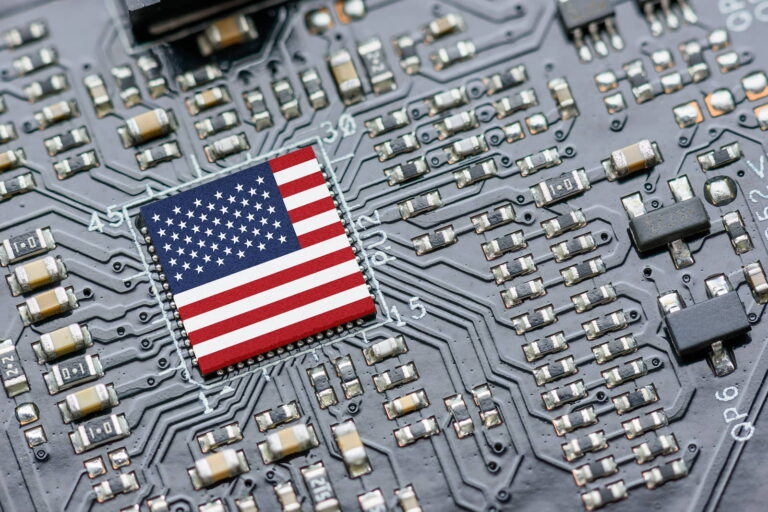The city of Kokomo is located in the Midwestern United States, approximately an hour’s drive north of Indianapolis. Located in an agricultural heartland between the historic industrial centers of Detroit and Chicago, Kokomo was once home to thriving auto manufacturing plants, but decades of deindustrialization have battered it, making it one of the areas hardest hit by the Great Financial Crisis. An otherwise unremarkable small American town, Kokomo is at the forefront of the largest economic and technological transformation in modern history. A revitalization effort under the Inflation Control Act (IRA) is transforming Kokomo into a major hub for electric vehicle (EV) battery manufacturing as part of a broader strategy to restore America’s industrial cachet.
An influx of foreigners into Kokomo’s mostly white, Republican population of 60,000 would upend the city’s culture, economy and demographics.
Automaker Stellantis (a merger between Fiat Chrysler Automobiles and France’s PSA Group) is partnering with South Korean tech giant Samsung to build two battery factories in the city over the next three years. The investment will create around 2,800 jobs, a significant proportion of which will be Korean, who will help set up and initially operate the plants and train locals.
Kokomo has a mostly white, mostly Republican population of 60,000, but the influx of foreigners will transform the city’s culture, economy and demographics. To aid the transition, the county is planning Korean restaurants, karaoke bars, housing and cultural integration programs, as well as strategically locating key Samsung suppliers in and around Kokomo to build a local supply chain ecosystem.
Kokomo is just one of 31 regional technology hubs across the country designated by the Biden Administration following the early success of the IRA and CHIPS and the Science Act. $280 billion in federal funding and tax incentives under CHIPS, backed by government support at the state and local levels, are driving the restoration of U.S. manufacturing capacity across semiconductors, artificial intelligence, quantum, the Internet of Things, advanced communications and cybersecurity. More than $200 billion under the IRA program will support parallel efforts in clean technology innovation, including EVs, batteries, solar and wind. Both efforts are part of a broader economic doctrine to short-circuit China’s cutting edge in industries and supply chains central to next-generation technologies.
International collaboration and workforce development are key pillars in each of CHIPS and the IRA. Much of the talent needed to support transitions such as advanced manufacturing exists outside the United States, and concerted efforts to build a talented domestic talent base have been limited to date. Building a reliable talent pipeline across the country, combined with effective partnerships with international organizations, has become a key priority for industry and the education sector.
Once the heartland of American steel production, Pittsburgh, Pennsylvania, is making great strides in closing its talent shortage to breathe new life into its languishing steel industry. The city’s factories have reopened as thriving hubs for start-ups and academic institutions, while the rusted framework of buildings that once housed steel mills remains intact. Investments in community college access and collaborative workforce strategies developed by universities in partnership with technology companies give Pittsburgh’s young people the opportunity to follow in the career paths of their forebears through advanced manufacturing. Mid-career workers, some of the most disenfranchised by America’s deindustrialization, are also being given the opportunity to retrain in next-generation industries.
America’s big gamble – securing the future of technology design and development – cannot be achieved alone, and it cannot be achieved without the right talent.
Phoenix, the capital of Arizona, is aptly named the “epicenter” of America’s semiconductor industry revival and home to established market players such as tech giant Intel. America’s computer chip manufacturing boom has declined from 37% in 1990 to about 12% today, largely due to the growing market dominance of East Asian companies such as Taiwan’s TSMC. Under CHIPS, TSMC opened a factory in Phoenix, shifting much-needed expertise and capabilities to a domestic base in the United States (thus reversing long-standing market trends in the Greater Phoenix area). Community colleges are capitalizing on the surge in chip production in the region by working with industry to co-design semiconductor technician courses.
The CHIPS and IRA efforts are playing out against the backdrop of an uncertain political climate with a Trump presidency at stake. While many of the CHIPS efforts will likely survive a change in administration, there is widespread skepticism of the IRA’s clean technology efforts while both parties recognize that national security imperatives are fundamental to safe, local, and resilient semiconductor manufacturing. Prominent Republicans have expressed nearly as much disdain for the IRA as the fervent support for non-renewable energy expressed by their party’s presidential candidates. Democrats’ potential trump card remains the trumpeting of the investment allocation and job creation by CHIPS and the IRA that has disproportionately benefited Republicans and battleground states.
America’s big bet in securing the future of technology design and development cannot be achieved alone, nor can it be achieved without talented people. International partnerships are playing a critical role in importing the expertise and capabilities needed to build resilient supply chains and support reindustrialization. Equally needed are ongoing and creative education, awareness, and integration strategies across urban and rural centers. These are great examples of the diverse, yet increasingly aligned, efforts underway to build a reliable workforce pipeline for next-generation industries.
All views expressed are those of the author, who obtained inspiration and specific information for this article from a recent study trip sponsored by the U.S. Department of State.


